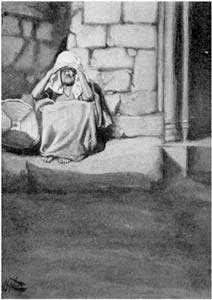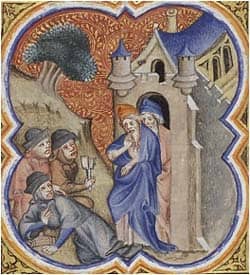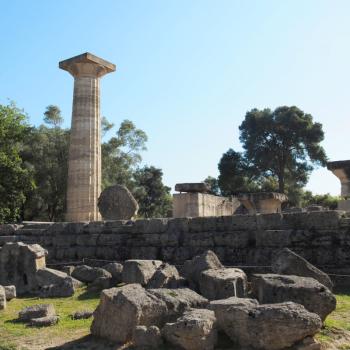Leviticus 12:1-13:59, 14:1-15:33
By Talia Davis
 This double portion starts off (somewhat) easy... giving some guidelines for women after childbirth. Because blood is a part of the childbirth experience, purification rules similar to a woman's menstrual cycle apply. Now, a lot of people misinterpret these rules in relation to Jesus and Mary saying that Mary was banished from people after birth. This is not the case. When a women gives birth to a boy, it as if she has her period and is in that state for seven days; then she must wait another 33 days to go to the mikvah and be refreshed. When it is a girl baby, the time increases to 14 days then another 66 days. Why? Because a girl will eventually have her own period and women are born with all their eggs intact. Therefore the mother is acknowledging that for her daughter.
This double portion starts off (somewhat) easy... giving some guidelines for women after childbirth. Because blood is a part of the childbirth experience, purification rules similar to a woman's menstrual cycle apply. Now, a lot of people misinterpret these rules in relation to Jesus and Mary saying that Mary was banished from people after birth. This is not the case. When a women gives birth to a boy, it as if she has her period and is in that state for seven days; then she must wait another 33 days to go to the mikvah and be refreshed. When it is a girl baby, the time increases to 14 days then another 66 days. Why? Because a girl will eventually have her own period and women are born with all their eggs intact. Therefore the mother is acknowledging that for her daughter.
Now this doesn't mean she is put in a cave and forgotten. It just means she is not physical with her husband, just the same as when she has her period and husband and wife are apart. (See the laws of Taharas Misphacha.) And that's all in relation to the "easy" stuff... now let's talk skin diseases...
The next part says that when one of the Israelites had a rash or any skin issue, they went to the priests. Then if the priest decided it was a specific type of issue, he would tell the person to rip their clothing (similar to what is done at a funeral), cover their upper lip, uncover their hair, and shout "Unclean! Unclean!" Then they had to leave the camp. What? All for a rash? Well, there are theories here (as there usually are). But we will get to theories in a minute. We are almost finished with Tazriah. The last part of that parsha is that these kinds of eruptions could happen on clothing or homes! Wow... pretty gross!
Mezorah picks up there talking about cleaning skin diseases. Lots of recipes here for cleansing someone. A live bird, a dead bird, cedar wood, hyssop... yum. Further, Mezorah mentions that if a house showed signs of the rash it should be destroyed. And if clothing showed signs, it should be burnt. Well, that makes it sound like this is a very contagious disease.
 The drash (commentary) behind this is more interesting than you would think. Lashon Hara (evil speech... aka, talking smack) was a biggie on G-d's list. The drash is that you would get this disease for lashon hara. First it started on your walls and if you didn't heed that warning, it spread to your clothing and then, finally, on to you. If you don't listen to what G-d is saying, you become unclean and have to leave the community until you learn your lesson. G-d doesn't want that "plague" to spread.
The drash (commentary) behind this is more interesting than you would think. Lashon Hara (evil speech... aka, talking smack) was a biggie on G-d's list. The drash is that you would get this disease for lashon hara. First it started on your walls and if you didn't heed that warning, it spread to your clothing and then, finally, on to you. If you don't listen to what G-d is saying, you become unclean and have to leave the community until you learn your lesson. G-d doesn't want that "plague" to spread.
Now, last thing... these are the passages that people pulled from to exile lepers. You always hear about the leper communities and leprosy... well... that was a bit of a mistake. One guy mistranslated and boom... centuries of confused lepers (and non-lepers too).
Whoda thunk that we would get a leprosy lesson this week?! And whoda thunk that what we think of leprosy and how the word is used in modern translations of the Bible stems from a translation error! Many people think that these two portions are speaking directly about skin diseases or illness, but in reality they are talking about the effect of our behavior and, more specifically, our tongue on how we live our lives.
Parshat Tazria from G-dcast.com
More Torah cartoons at www.g-dcast.com




